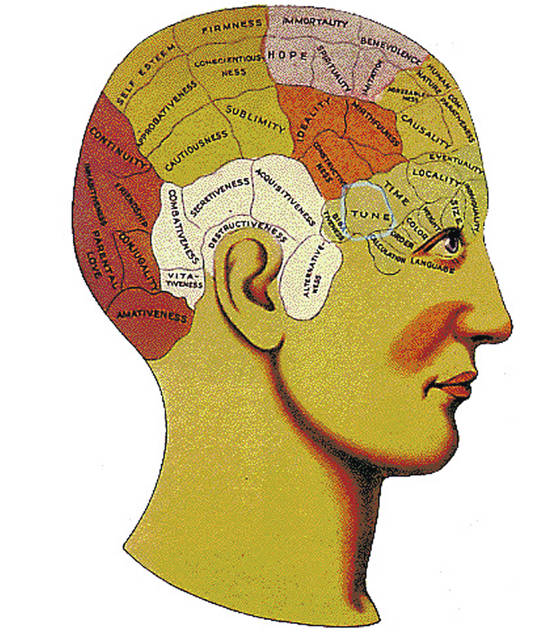
Can someone’s head shape determine his or her personality? Does a person’s brain have 27 distinct organs that make up their character and disposition? In the late 1800s, many people believed so. These beliefs were the hallmarks of a pseudoscience called phrenology that swept the nation, and Highland County residents became a part of the craze.
The worldwide obsession with phrenology began when German neuroscientist Franz Gall claimed that feeling a person’s skull could reveal their personality traits. Gall believed the bumps and abnormalities on someone’s head were the result of the brain causing pressure on the skull. He concluded that “organs” of the brain — 27 of them to be exact — exerted pressure that created bumps, which could be felt and measured from a person’s skull shape. His findings were at first widely accepted, but his work was later criticized. Despite this, newspapers all over the world were captivated by this sensational study and phrenologists sprang up around the world to spread the practice.
The Highland Weekly News published an 1885 news article on a Cincinnati lecture named Professor L.N. Fowler, a renowned phrenology expert from New York. Another article published details on how to get Fowler’s newest publication, the “Illustrated Annual of Phrenology and Health Almanac” of 1881. Yet another article mentioning phrenology is from an unlikely source — an 1885 story about a sewing machine factory operator who was gifted in the art of machine repairs. He credited his skills to his phrenology studying and earned the unique nickname “Bump Man.”
Phrenology became an explanation for almost anything and a possible answer to everything. An article in the Highland Weekly News stated in 1857: “Not one, but many a thousand of young men, have failed to accomplish anything in life, simply because they hadn’t the faculty of perseverance — a part of a man’s phrenology…” Many ads for books and almanacs promised to help the reader understand the marvels of phrenology and how they, too, could be experts — the only clear answer to their problems. One of the strangest problems “solved” by phrenology came from a republished 1897 News-Herald article suggesting that before horses are bought, they must be checked with phrenology to understand their temperament.
Phrenology swept the nation in nearly every field. Experts were sometimes called to testify in criminal court based on their findings, which were seen as valid proof of insanity or stood in place of a motive. As baffling as it seems today, someone’s future could be decided by the shape of their head.
The first U.S. criminal case where phrenology was presented by the defense to argue for a more lenient sentence was in the 1834 trial of 8-year-old Major Mitchell. He was charged with one charge of felonious assault and one charge of maiming of his classmate. The defense insisted the reason for young Mitchell’s heinous acts was that his “organ of destructiveness” behind his right ear was injured in a fall at a young age and displayed a prominent bump. This, the defense argued, caused an uncontrollable, all-consuming rage.
While the judge eventually ruled in favor of the prosecution on this case, Mitchell’s story became infamous for its use of phrenology. Looking back with what we know about neuroscience today, the phrenologist’s findings were likely not too far from the truth. According to numerous sources, studies have shown that childhood head injuries may lead to violent outbursts and a permanently altered personality much like Mitchell exhibited.
From social and criminal justice to neuroscience itself, phrenology’s impact was profound, and can still be seen in modern science. The short-lived study paved the way for modern neuroscience and captivated Highland County along the way.
Sources for this story included: www.newspapers.com/search/#query=phrenology&t=1395; https://slate.com/technology/2015/12/how-phrenology-was-used-in-the-1834-trial-of-9-year-old-major-mitchell.html; ttps://www.verywellmind.com/what-is-phrenology-2795251; and Image: https://cerebromente.org.br/n01/frenolog/frenmap.htm.
Isabella Warner is a stringer for The Times-Gazette.


